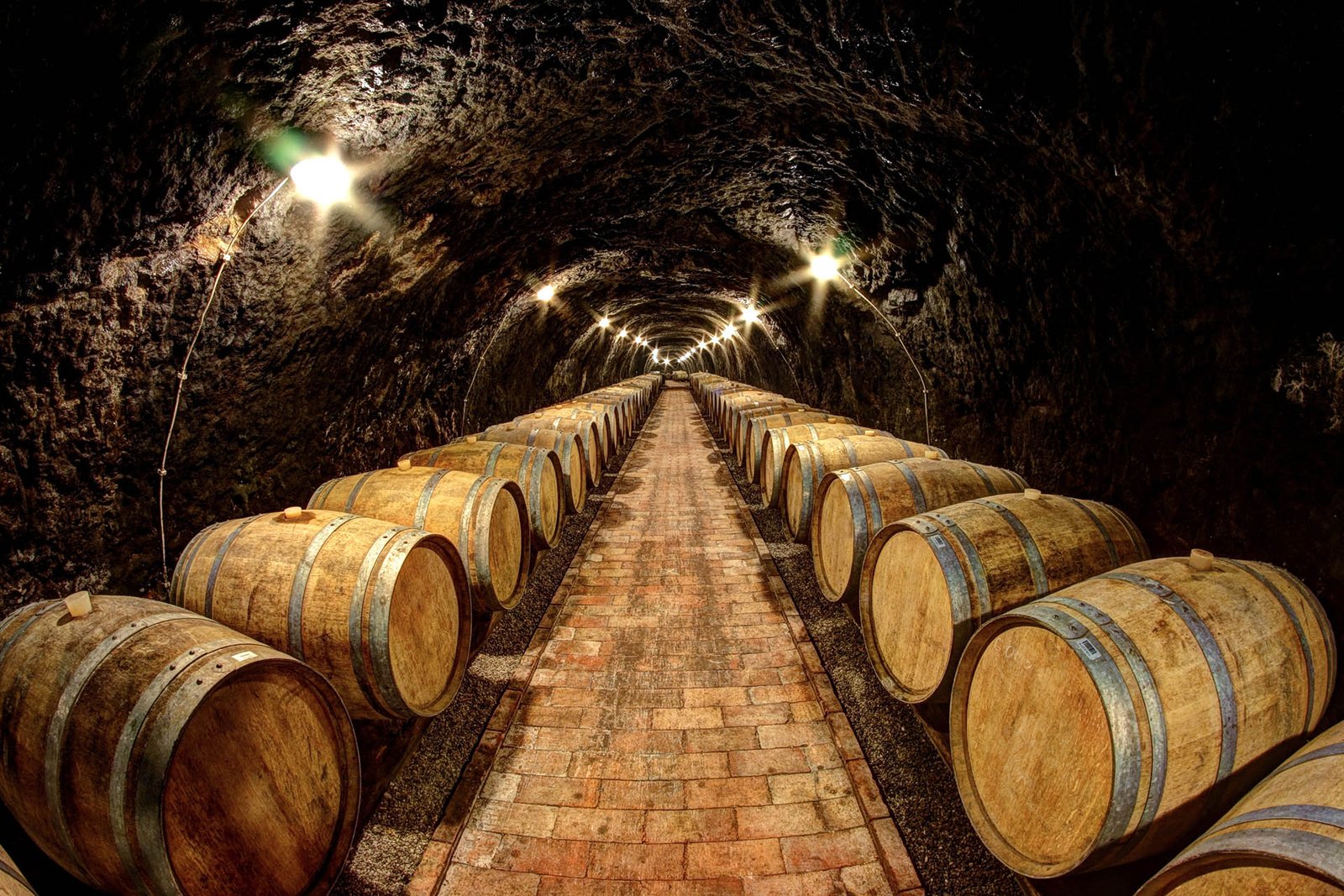The Cultivation Method That Makes This Hungarian Wine a Legend

[ad_1]
The region of Tokaj, located in the northeast corner of Hungary, hides an intricate labyrinth of wine cellars. There, amid the earthy scent of oak barrels, lies one of the world’s most famous dessert wines, Tokaji Aszú.
“Aszú is unique, as there is nothing else in the world that can naturally concentrate the energy of the sun and the earth,” says István Szepsy Jr., a winemaker at the Szepsy winery in Tokaj. His family-run business’ nearly 500-year history is closely intertwined with Tokaji Aszú.
But what makes the wine legendary?
Its distinctive taste is the result of cultivation methods, the region’s microclimate and centuries-old winemaking traditions.

The wine’s balance of sweetness and acidity comes from Botrytis cinerea, otherwise known as noble rot. The fungus makes grapes shrivel and concentrate their juices. The interplay of volcanic clay soil and unique microclimate allow for noble rot in Tokaj, and Tokaji Aszú has been produced for centuries.
It isn’t known exactly when Hungarians started to produce this famous sweet wine. But its first mention in an inheritance record of the gentry Garay family dates to 1571.
Coined the “wine of kings, king of wines” by King Louis XIV of France at the beginning of the 18th century, Tokaji Aszú was served in royal courts across Europe. And it was revered by popes, emperors and artists alike.
The international success was followed by a series of misfortunes. In 1885, phylloxera wiped out 90% of the vines in Tokaj. The 20th century brought two World Wars and a Communist regime that almost destroyed Hungary’s winemaking tradition.
Since the 1990s, however, Tokaj has undergone a renaissance. Forward-thinking producers are not only creating modern Tokaji Aszú, but are marketing the wine style and region throughout the world in addition to sharing the dry bottlings the region is also capable of yielding.

The Ins and Outs of Making the Perfect Tokaji Aszú
Six grape varieties are permitted for use in the production of Tokaji Aszú. Furmint and Hárslevelű are the main varieties employed, although Sárga Muskotály, Kövérszölö, Zéta and Kabar may also be used.
To make Tokaji Aszú, each botrytized grape must be evaluated and chosen. According to Szepsy, the perfect grape resembles “a slightly moldy raisin with a consistency of a day-old chewing gum.”
To put that in scientific terms, researchers from the Eszterházy Károly University of Hungary worked with Szepsy winery to define the best Aszú grapes in a recent study.
They defined botrytization in four phases. The first phase is unbroken, ripe berries. In phase two, the grapes show brownish/purple spots. The fruit begins to shrink in the third phase, and in the final phase, the grapes become purple, shriveled raisins.
According to the study, Furmint grapes in phase four make the best grapes for Tokaji Aszú.
“As Aszú wines have very high sugar content, it is important to reach an ideal level of acidity in the berries to get a harmonic taste,” says Dr. Kálmán Zoltán Váczy, the senior author of the study. And while phase four berries appear as early as September, the researchers claim that the perfect conditions come about in a short period between late October and early November.

How Tokaji Aszú Is Made
After harvest, the grapes are collected in tanks with a tap on the bottom. A result of building pressure and weight at the bottom of the tank, some of the berries are pressed and release an incredibly sweet, golden liquid of free-run juice. After years of fermentation, this concentrated juice, called Essencia, yields a rare and expensive Tokaji wine that contains a minimum of 450 grams per liter of residual sugar.
After pulling off any essencia juice, the botrytized aszú grapes are macerated with a base wine or fermenting grape must that’s made up of nonbotrytized or late-harvest fruits for between 12 and 60 hours. After maceration, the mixture is pressed and the resulting juice fermented and then aged in oak barrels or underground stone cellars, sometimes for several years.

The Challenges of Making Tokaji Aszú
Extensive rains or fog can produce too much rotting. But without sufficient rain, the grapes don’t undergo noble rot and shrivel. If either scenario happens, the grapes cannot be harvested, even for dry wine. The entire harvest is lost, which makes Tokaji Aszú one of the most unpredictable and costly wines to make in the world.
“You need to process it emotionally that you work for something for a whole year and then at the end of November, you find out that there’s no Aszú,” says Szepsy. “In 10 years, you’ll be able to make quality Aszú in three.”
While the process of making Aszu in Tokaj has remained mostly unchanged over the years, new investors have turned their attention to the region, and they don’t like the low odds of having a successful vintage. As a result, rules are sometimes tweaked. And in some wineries, productivity is favored over quality and tradition.
Szepsy believes the best way is to remain committed to quality and tradition.
“If you tell someone anywhere in the world to list their three favorite red wines or dry white wines, chances are Hungary will not come up,” he says. “But if you asked them to list their favorite sweet wines, Tokaji Aszú is likely to be on that list.”
[ad_2]






